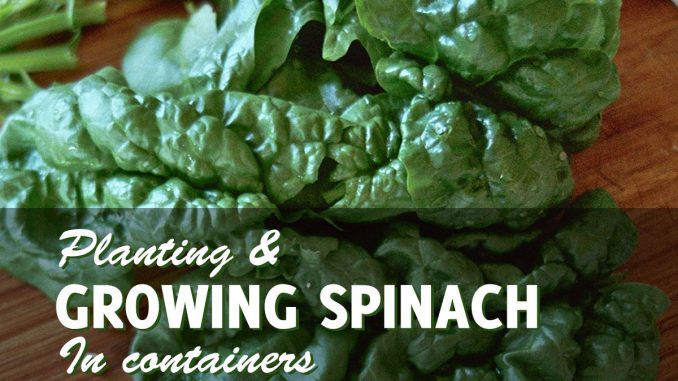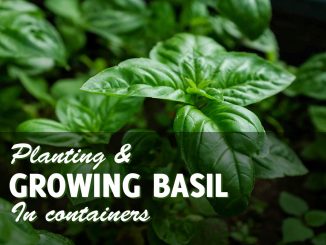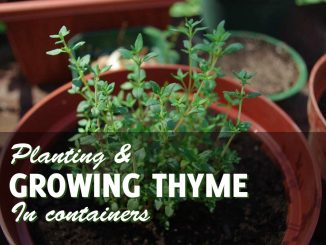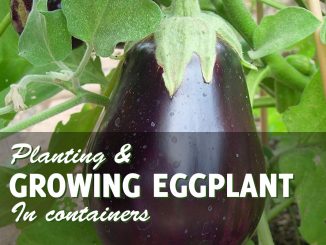
It is very easy to start growing spinach in containers, even if you are just beginning in gardening. Spinach is a really healthy vegetable that is easily grown in your garden. Spinach is high in fiber, B-complex vitamins, Vitamin A, iron, and other nutrients that help you fight infections and promote control of blood pressure.
It goes perfect in soups, pasta, dishes, or salads. If you like the taste of spinach that you purchase in grocery stores, imagine what the taste would be if you grow the plants in your vegetable garden. If you have limited space, do not let it deter you from cultivating your vegetable.
Before You Start Growing Spinach in Containers
First off, you have to choose the best variety of spinach for your container gardening. If you are just beginning to grow spinach, select disease-resistant varieties such as Nordic IV, Olympia, Wolter, Melody, and Tyee. Miniature spinach, such as Baby’s leaf Hybrid and Melody, are also perfect for container gardening.
Once you have chosen your preferred variety, you need to select a location that is best suited for your container spinach. Spinach prefers a sunny spot with at least 6 hours of sun a day. A perfect place would be your east-side windowsill for the morning sun is not too hot for your spinach. You can grow it in your kitchen if it can receive natural sunlight. If you live in an apartment, and you do not have too much lighting, position your plant beneath artificial light that is on for 6-8 hours a day will be enough for growing spinach in pots.
Selecting the Right Container to Grow Spinach
Choosing a pot for your spinach is very important. Placing your spinach in too small of a container will result in a plant that will start out good and end up bad. A pot that is at least 8 inches deep and 10-12 inches wide is good for one plant. If you wish to grow multiple crops, give each plant an area of 10 inches from the center. Basically, you need one plant for every foot in your windowboxes or rectangular planters when growing spinach in containers.
You can have a choice between terracotta pots, plastic garden containers, plastic pails, or wooden boxes for your spinach. If you live in a hot area, it would be best to have a container that is made of plastic, which doesn’t absorb the heat as much as terracotta. Light-colored containers are also preferred since they reflect heat.
Drill at least four drainage holes beneath your pots to promote drainage. Add a couple more drainage holes at opposite ends to further encourage drainage.
If you do not have the time to water your crops regularly, you can choose to have a pot that is 24 inches wide and 24 inches deep for one crop only. The more soil per plant, the less time you will need for watering.
Preparing Your Potting Mix for Growing Spinach in Containers
Ordinary garden soil is not preferred for growing spinach in containers. Regular garden soil is usually made up of clay and can hold in water and clump together. This can result in waterlogging, and your spinach roots will have no oxygen, which can lead to root rot. A potting mix bought in local gardening stores is ideal. It is a mix of sterile soil, perlite, vermiculite, and mature compost. This will ensure that your soil does not have any dormant pathogens such as fungus, viruses, and bacteria that will cause disease to your crops.
Invest in the right potting mix. Cheap ones will work initially for growing spinach in containers, but as time passes, your cheap potting mix will eventually retain water and clump together. Your potting mix must have a pH of 6.5-7.0. Adjust the pH of your potting mix with the use of sulfur to make it acidic, or with lime to make it alkaline. Mix in a good amount of compost because the spinach plants require plenty of nutrients.
Growing Spinach From Seeds
Spinach seeds are readily found in garden centers, however the variety tends to be lacking. This year I purchased an assorted 4 pack of heirloom seeds online and was really pleased. No matter where you get your seeds, make sure they aren’t too old.
Place your seeds inside the fridge for a week before you sow them in your pot. This will give them a head start in germination. If you plan to place your pots outdoors, sow in your spinach seeds 5-7 weeks before the anticipated hard freeze. A temperature below 20F will kill your seedlings.
Place your prepared seeds on top of the soil and cover loosely with ¼ to ½ inch thick compost. Do not pack the compost down as packing will prevent the sprouts from emerging. Others layer compost on top of the potting mix, place the seeds on top of the pot, and lightly rake the surface. See which technique will work for you.
Afterward, water your seeds with a fine-holed watering can or a sprayer set on mist mode to prevent washing away the seeds. Keep the soil moist but not wet, and your seeds will germinate within 7-10 days.
If you are growing spinach in containers that are 12 inches tall, thin the seedlings by selecting the one that is most healthy of the set once they have two true leaves, if you are growing in containers, space the seedlings 10 inches apart. Harden off your seedlings for two weeks indoors if you plan to set them outside.
Starting With Transplants
Transplants are preferred for faster cultivation of spinach. Plant transplants 10 inches apart in rows. If you have a wider container and wish to plant multiple rows, space your rows 12-14 inches apart. You can buy transplants in your local nursery or have your own by starting seeds indoors.
Care of Spinach Grown in Containers
Keep your crops healthy by giving them at least 1 inch of water every week. Check the soil by touching it with your fingers. Damp soil requires no watering. Always check your spinach as it is easy for it to dry out when growing spinach in pots. Spinach plants are known to be heavy feeders, so give them 15-15-15 or 19-5-9 slow-release fertilizer according to package instructions every two weeks.
Do take care not to give your crops too much fertilizer as it is also easy to have a lot of nitrogen concentration in container gardening. Some people prevent this by watering their pots until the water goes out the drain holes, and then wait for a while before giving another helping of water. This process is done twice a week or every 3-4 days. You can side-dress your spinach with compost manure or feed it with compost tea every two weeks if you prefer organic gardening.
Harvesting Your Spinach
Harvest your crops 4-6 weeks after planting your seeds or when the leaves have grown into preferred size. Cut out leaves individually, starting from the outer edges going to the center. Be sure to leave behind some young leaves for a continuous harvest. If you wish to do mass harvesting with growing spinach in containers, cut the leaves an inch from the crown. This will encourage your crops to produce more leaves for another season of harvest.
Looking for something to eat with the delicious spinach you have now harvested? Check out our guide on growing zucchini in containers!




Be the first to comment